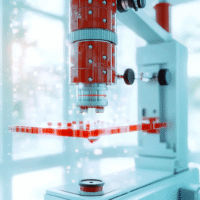Static Palpation Precision Evaluation Study
Introduction
Clinicians often use manual therapy to treat low back pain by feeling the spine to find the spinous processes. This study aims to assess how well experienced clinicians can consistently locate these spinous processes from S1 to T12 through palpation. The results will be compared to topographical data representing the lumbar lordosis at different time points.
Materials and Methods
In a previous prospective randomized trial, experienced clinicians used palpation to locate the lumbar spinous processes (S1-T12) and then digitized these locations in three-dimensional space. The same digitizing equipment was used to continuously collect three-dimensional position data of a wheel rolling along the back’s surface through a trajectory connecting the previously digitized locations of the spinous processes. This process was repeated at 4 days, 1, 4, and 12 weeks. The resulting lordosis trajectories were plotted and aligned using the most anterior point in the lordosis to compare the locations of the spinous processes identified in different trials. Intra- and interrater reliability and agreement were estimated using intraclass correlations of agreement and Bland-Altman limits of agreement.
Results
Five clinicians palpated a total of 119 participants. The results showed a large degree of variation in precision estimates, with a mean total value of 13 mm (95%CI = 11;15). This precision error was consistent across all time points. The smallest precision error was found at L5, followed by S1, after which the error increased superiorly. Intra- and interrater reliability was poor to moderate.
Conclusions
Comparison of palpation results to a topographic standard representing the lumbar lordosis is a new approach for evaluating palpation. Our results confirm the findings of prior studies that palpation of lumbar spinous processes is imprecise, even for experienced clinicians.
PMID: 38814967 | DOI: 10.1371/journal.pone.0304571
Clinical Trials and Healthcare Solutions
Clinical trials are essential for developing safe and effective treatments. Our AI-driven platform, DocSym, consolidates ICD-11 standards, clinical protocols, and research into a single, easily accessible knowledge base for clinicians, extending the benefits of clinical trials into everyday medical practice.
In today’s healthcare environment, streamlining operations is crucial. Our mobile apps support scheduling, monitoring treatments, and telemedicine, making it easier to manage patient care and expand services digitally.
By using AI, clinics can enhance their workflows, improve patient outcomes, and reduce paper routine. Learn more about how we can help at aidevmd.com.






























